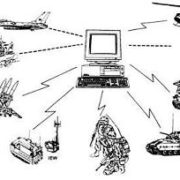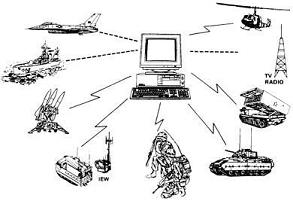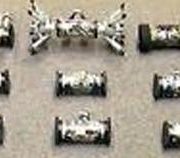 AMREL is no stranger to achievements at the annual Robot Rodeo. As reported by Defense Professionals, our team had success again at this year’s annual evaluation event staged by Joint IED Defeat Organization (JIEDDO) and other military stakeholders. For more information on AMREL’s role in this groundbreaking demonstration of autonomy, check out AMREL COTS Handheld Used for OCU & Payload Controller at Robot Rodeo.
AMREL is no stranger to achievements at the annual Robot Rodeo. As reported by Defense Professionals, our team had success again at this year’s annual evaluation event staged by Joint IED Defeat Organization (JIEDDO) and other military stakeholders. For more information on AMREL’s role in this groundbreaking demonstration of autonomy, check out AMREL COTS Handheld Used for OCU & Payload Controller at Robot Rodeo.
Posts
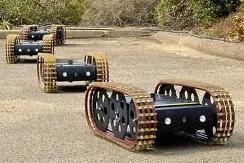 In Part One of our series on GPS, we discussed its uses, problems, and alternatives. In Part Two, we take a look at the role of GPS in Unmanned Ground Vehicles (UGV).
In Part One of our series on GPS, we discussed its uses, problems, and alternatives. In Part Two, we take a look at the role of GPS in Unmanned Ground Vehicles (UGV).
Inertial Navigation System
Unmanned Aerial Vehicles (UAV) and ground vehicles often use a combination of GPS and Inertial Navigation System (INS). INS depends on input from motion sensors (accelerometers) and rotation sensors (gyroscopes). Through a process known as “dead reckoning,” the vehicle’s current position is calculated utilizing time passed from previous locations and estimates of speed.
Read more
At the recent Ground Robotics Capability Conference (GRCC), I surveyed a number of vendors about what was on their mind. I read them a list of topics that are frequently covered in OCU Pro newsletters as well as AMREL’s corporate blog.
By far, one topic elicited more interest than any other: interoperability. On one hand, I was pleased. AMREL has been a leader for developing solutions that have the ability to “… to work with or use the parts or equipment of another system” (Merriam-Webster definition). For example, our Flexpedient® Solutions enable kit building of Operator Control Units with common control capabilities.
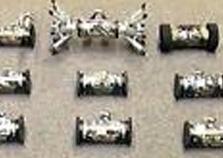 Why are unmanned systems developers offering so many different kinds of platforms and ideas, when there is comparatively little demand by the civilian market? Why are there more offerings than customers?
Why are unmanned systems developers offering so many different kinds of platforms and ideas, when there is comparatively little demand by the civilian market? Why are there more offerings than customers?
These questions were raised in the Unmanned Systems group in LinkedIn. It provoked a number of insightful comments about the current state of unmanned systems and its future. If you are a member of LinkedIn, and can log in, you can read the discussion here. Read more
 I am going to make a number of assumptions about a certain group of roboticists. They:
I am going to make a number of assumptions about a certain group of roboticists. They:
- May have heard the term “Uncanny Valley.”
- Are vaguely aware that it has something to do with people’s revulsion of certain types of humanoid robots.
- Feel the concept of “Uncanny Valley” has nothing to do with them, because they deal with “real” robots, not those faddish, impractical, Japanese human imitation contraptions.
If the above describes you, guess what? You are wrong; the “Uncanny Valley” may impact your work, and sooner than you think.
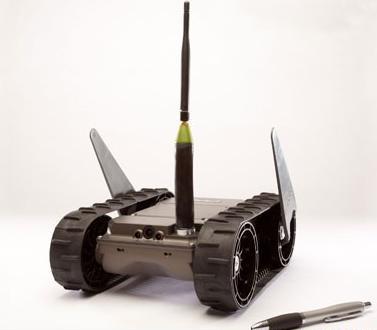 In the early days of the Afghanistan and Iraqi wars, US forces had no effective countermeasures against Improvised Explosive Devices (IEDs), the single biggest cause of combat deaths. To fight the IED threat, our armed forces turned to Unmanned Ground Vehicles (UGV).
In the early days of the Afghanistan and Iraqi wars, US forces had no effective countermeasures against Improvised Explosive Devices (IEDs), the single biggest cause of combat deaths. To fight the IED threat, our armed forces turned to Unmanned Ground Vehicles (UGV).
It’s hard to remember now, but UGVs barely existed 10 years ago. The Defense community abandoned the traditionally leisurely pace of decades-long weapons development and quickly flooded combat theaters with thousands of UGVs. In 2011, the world’s governments are projected to spend $702 million a year on UGVs. Below is a chart comparing a few UGVs. Read more
 I don’t know about you, but I am sick of certain clichés about unmanned systems and combat. It’s just my opinion, but some commonly repeated statements confuse, rather than clarify. Here are a couple of my “favorites.”
I don’t know about you, but I am sick of certain clichés about unmanned systems and combat. It’s just my opinion, but some commonly repeated statements confuse, rather than clarify. Here are a couple of my “favorites.”
“The use of unmanned systems in combat will destroy the warrior ethos.”
I’m sure you’ve heard this. “They’re cowards, these so-called ‘soldiers’ who strike from afar. A real man confronts his enemy face-to-face. These new weapons should be banned.”
Of course, this quote is from a French nobleman talking the English archers and their long bows. The whole argument about the unmanliness of “death from afar” probably started the first time someone threw a rock. This line of reasoning ignores the fact that war isn’t about building soldierly virtues; it’s about winning (or to paraphrase Patton, “Making the other guy die for his country”). Read more
An IEEE Spectrum article features an Al Jazeera video (see below) about Libyan rebels making their own weapons. The rebels transform a child’s toy into a weaponized UGV, prompting IEEE to conclude that “Anyone can (on principle, at least) build a robot, and given the need or the motivation, anyone can put a gun on one…”
 Every once in a while, someone asks me to translate military jargon, or more often summarize a lengthy statement into an “executive summary.” Here are a couple of examples of my attempts to convert a dense forest of words into a simple “take home message.”
Every once in a while, someone asks me to translate military jargon, or more often summarize a lengthy statement into an “executive summary.” Here are a couple of examples of my attempts to convert a dense forest of words into a simple “take home message.”The direction for unmanned systems and all of the Defense  community is clear; we must do more with less and do it faster. We need to create the best possible systems for tomorrow’s needs as soon as possible. One niggling little problem: what does tomorrow look like?
community is clear; we must do more with less and do it faster. We need to create the best possible systems for tomorrow’s needs as soon as possible. One niggling little problem: what does tomorrow look like?
For example, do we develop unmanned systems with multiple assets or a single asset? Which payload configuration will be desirable for the future warfighter?
The obvious answer would seem to be, the more the better. Take the case of Sensitive Site Exploitation (SSE). Soldiers would love to have a robot that can enter a potentially dangerous house and clear it with non-lethal stun grenades. Of course, any armed application should be matched with optical surveillance capabilities as well. Olfactory sensors would be valuable in detecting explosives. When you add to the wish list an IED jammer and maybe the ability to detect ABC weapons, a multiple-asset unmanned system seems virtually certain. Read more
American Reliance, Inc.
789 N Fair Oaks Ave,
Pasadena, CA 91103
Office Hours
Monday-Friday:
8:00 am – 5:00 pm PST
Saturday: Closed
Sunday: Closed
Main: +1 (626) 482-1862
Fax: +1 (626) 226-5716
Email: AskUs@amrel.com
Blog Posts
Mobile Biometric Solutions
Mobile Biometric Smartphones & Tablets
BioFlex S® Commercial Smartphones
BioSense AT80B | 8″ Android Biometric Tablet
BioSense PA5 | 10.1″ (Gen 2) Android Biometric Tablet
BioSense PA5 | 10.1″ Android Biometric Tablet
BIOPTIX PM3B | 7″ Windows Biometric Tablet
BIOPTIX PM5B | 10.1″ Windows Biometric Atom Tablet



